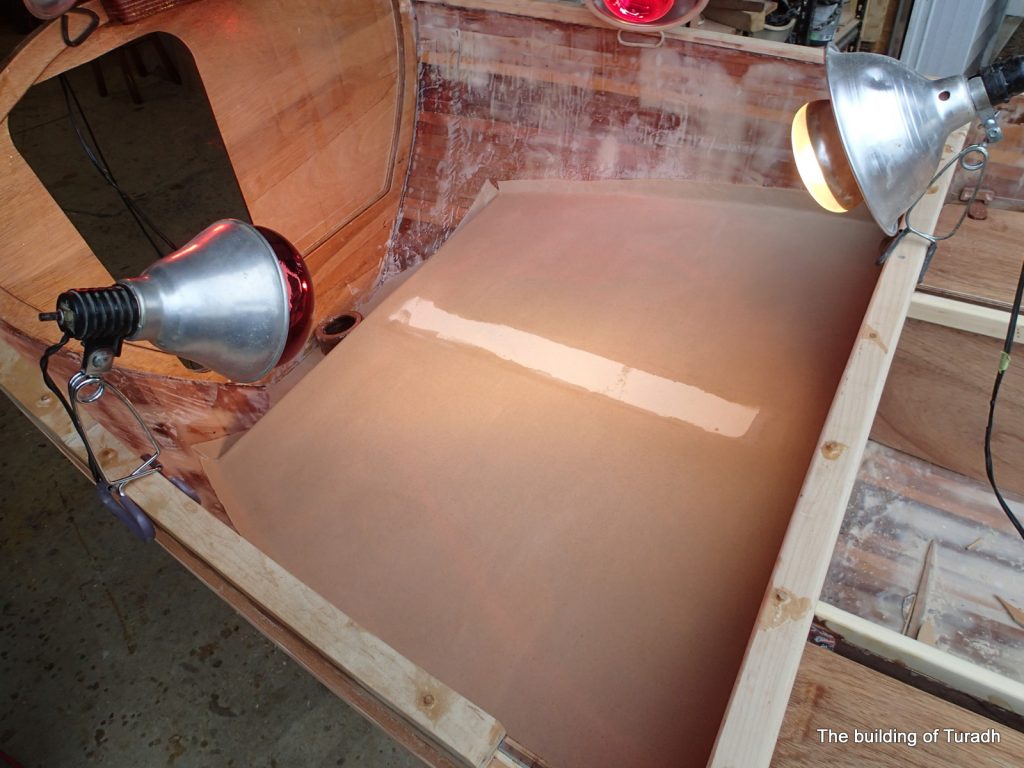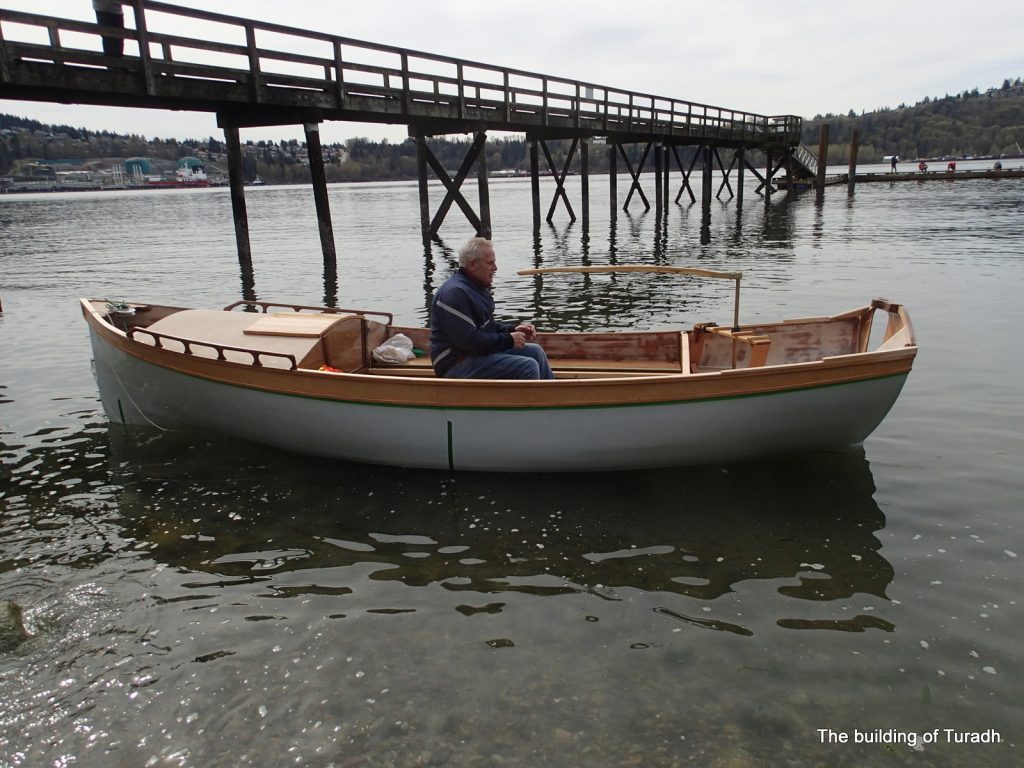
I liked the way the cuddy top canvas worked so I canvassed the aft deck as well. No epoxy where the rudder goes in. I coated the deck with epoxy resin and then used the canvas like cloth, saturating the canvas. I still got a “rough”, non-skid texture on the deck. You can see the “pins” on the maple capping pieces. They will be sanded smooth later.

In the latest edition (March/April, 2024) of WoodenBoat, I like the look of the railing of the restored “Ester”, so this is my imitation of it for my cuddy top.

I cut the railing in half, steamed the two pieces for an hour and then clamped them to the hull to get the bend right. My steam box is to the right.

The aft deck has been routed out for the rudder frame.

The railing is epoxied to the cuddy top. I used bamboo dowels to attach the railing to the deck. I am a little worried that the posts are too thin, hence the bamboo dowels run completely through the posts. If, in use, I end up breaking them, I will replace with stronger ones.

I had to modify the bunks on my trailer. The hull of the Prince William Sound Yawl is flat. The new bunks will accommodate her flat bottom. I am going to determine the oarlock placement while she is afloat, with one oarsman.

Here she is on her trailer, with the light bar attached to the transom. I decided to go with the “floating” light bar, so the lights are at the transom. Less likely to break them by backing into something and less likely to get them submerged. You can see the two drain holes in the transom. Any water that gets onto the Aft deck will drain out, the same as for the forward wet storage area.

Side view. She is strapped onto the trailer and her bow is snug into the trailer mast chock. All of the major internal structure is in place. The only unaccounted variable for trim is her sailing rig.

In the water at Cate’s Park. She is floating just about perfectly. I have put tape on the hull with depth marks. She is showing that she floats in about 3″ of water! If you allow for the bilge keels, that makes it about 4″. The design specs say about 4″, so I feel that I am pretty close. The cassette rudder is sitting on the Aft deck. The rudder projects 14″ below the hull when it is in place, so raising it when beaching is necessary.

My friend and fellow boat builder, Matt, helps me determine where the oarlocks should go for a single rower. Since I changed the designed fore and aft decks, I felt that I could not rely on the plans for the oarlock placement, hence the float test.

Hauled up on the beach.
Final build stats: 16′ 5½” long by 56½” wide by 24″ deep (20″ of freeboard) at the oarlocks.
Her name is Turadh (‘too-rag’), a Gaelic word for the dry spell between rain showers or a break in the clouds between showers.

Next will be the Oarlocks and sailing rig.
Mike
